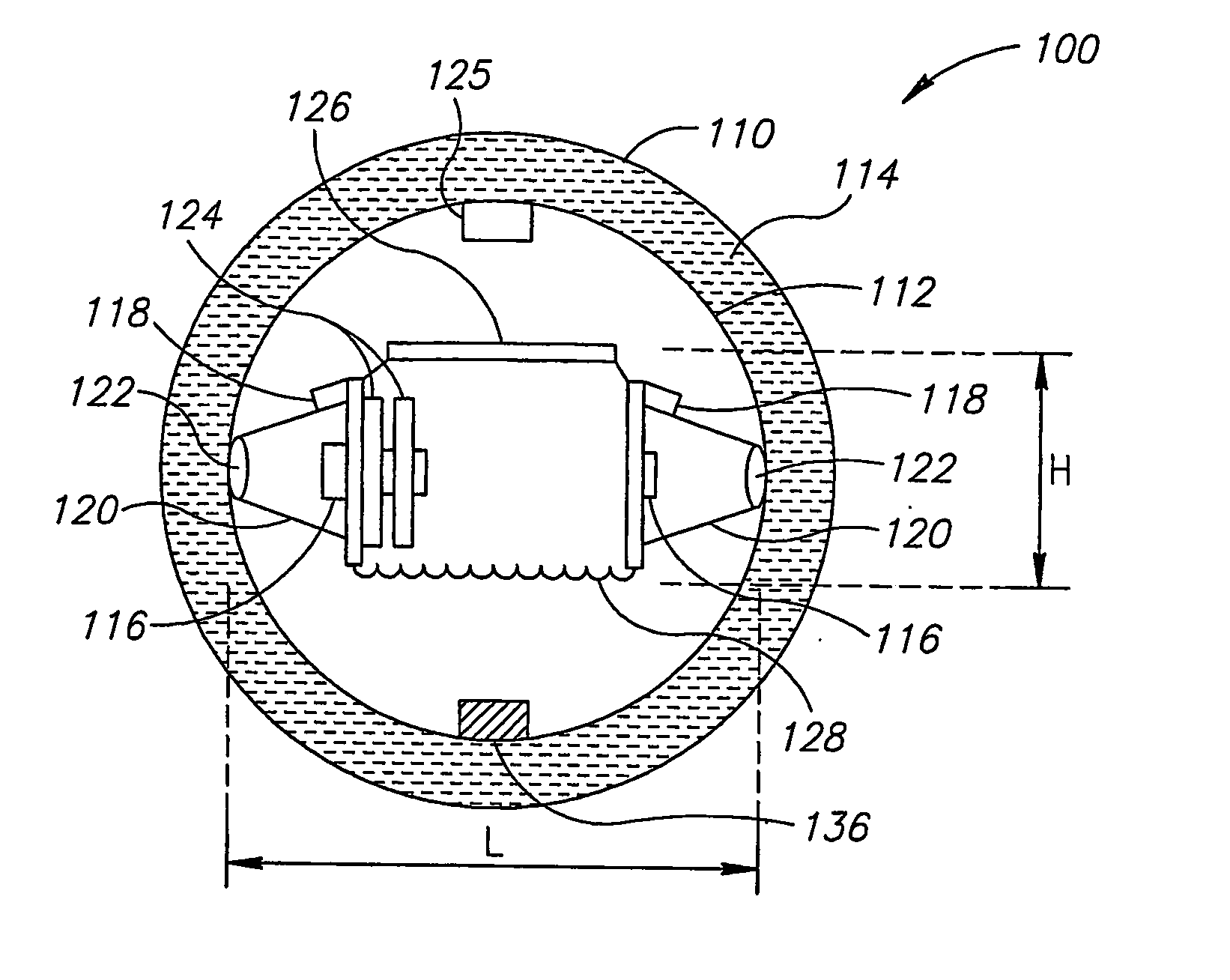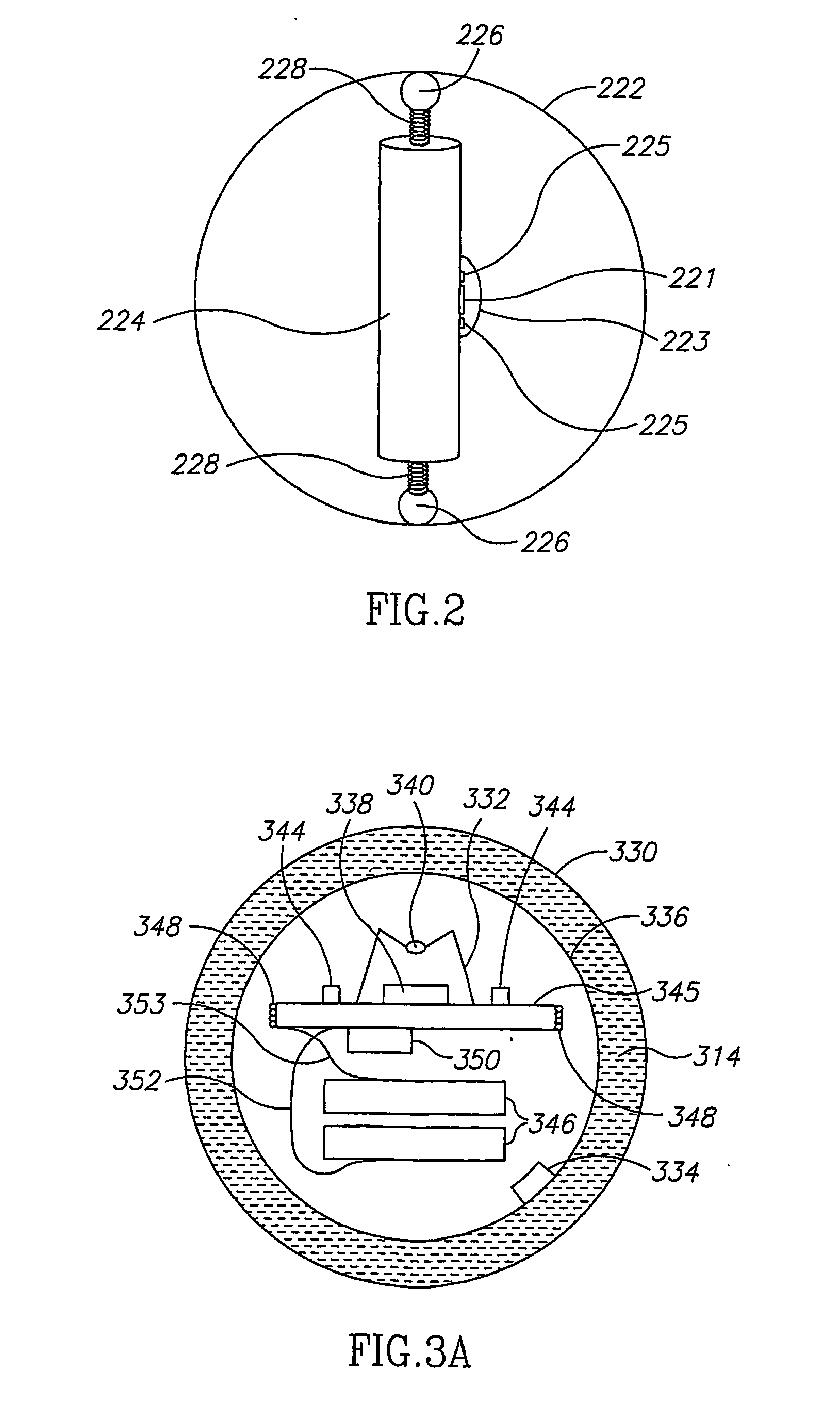In-vivo sensing system
a sensing system and in-vivo technology, applied in the field of in-vivo sensing, can solve the problems of device trapped in the fold of the walls of the body lumen, slow and unpredictable passive movement of objects through the larger body lumen, etc., to achieve the effect of reducing friction, facilitating change, and widening the field of view that can be captured by the imaging devi
- Summary
- Abstract
- Description
- Claims
- Application Information
AI Technical Summary
Benefits of technology
Problems solved by technology
Method used
Image
Examples
Embodiment Construction
[0016] In the following description, various aspects of the present invention will be described. For purposes of explanation, specific configurations and details are set forth in order to provide a thorough understanding of the present invention. However, it will also be apparent to one skilled in the art that the present invention may be practiced without the specific details presented herein. Furthermore, well-known features may be omitted or simplified in order not to obscure the present invention.
[0017] Reference is made to FIG. 1A which is a simplified conceptual illustration of a sensing system such as an imaging system 100 incorporating a sensing device such as an imaging device 112 suspended in a liquid 114 encapsulated within an outer covering housing 110 constructed and operative in accordance with an embodiment of the invention. The housing 110 may be, for example, spherical, ovoid, or any other suitable shape; the housing 110 may be partially deformable. The imaging dev...
PUM
 Login to View More
Login to View More Abstract
Description
Claims
Application Information
 Login to View More
Login to View More - R&D
- Intellectual Property
- Life Sciences
- Materials
- Tech Scout
- Unparalleled Data Quality
- Higher Quality Content
- 60% Fewer Hallucinations
Browse by: Latest US Patents, China's latest patents, Technical Efficacy Thesaurus, Application Domain, Technology Topic, Popular Technical Reports.
© 2025 PatSnap. All rights reserved.Legal|Privacy policy|Modern Slavery Act Transparency Statement|Sitemap|About US| Contact US: help@patsnap.com



